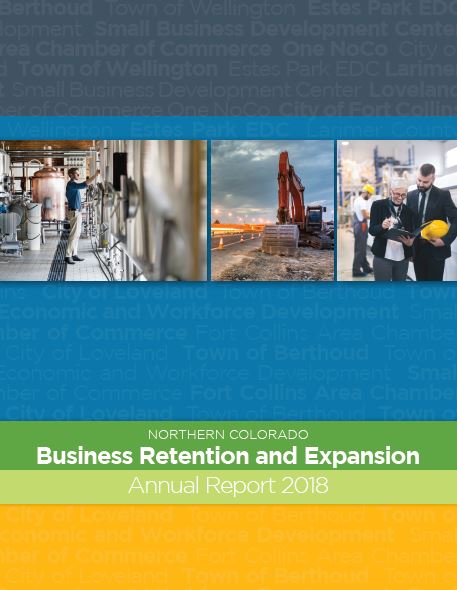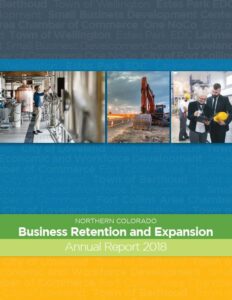Our workplaces are changing, and the changes are dramatic. Professionals need to pay attention to and prepare for the workplaces of the future. An important aspect of this preparation is to develop the job skills that will help you succeed and thrive in the new reality of the next decade. Consider how your own career has evolved over the last five years, and you can imagine how much it may change in the next five. These are the most important job skills for the future, and there’s no better time than now to start building them.
THRIVE GLOBAL: 10 Ways To Engage A Mature Workforce
With the growth of the multi-generational workforce, it’s essential that leaders ensure all team members are motivated to deliver their best, but how do you motivate the maturer members of your team?
By Janice Sutherland, Women’s Leadership Expert at This Woman Can
You can’t have escaped the news that people are both living and working longer, which in turn means the average workforce will consist of a number of mature workers. This in turns brings its own nuances when it comes to engaging your team. That outward bound team building exercise you had planned or the club night session may not (or may – let me not be judgmental here) be successful at motivating your entire workforce. This provides employers with a unique opportunity to get creative when motivating and engaging a more mature and experienced workforce further aiding staff retention. Keep these top 10 engagement ideas in mind:
Harvard Business Review: The Case for Hiring Older Workers
By: Josh Bersin and Tomas Chamorro-Premuzic
There’s a lot of talk about gender bias, racial bias, and culture bias at work, and each are important for many reasons. But perhaps one of the biggest and most problematic types of bias we face is the bias of age: we often evaluate people based on their age, and this is now becoming a major challenge in the workplace.
Several years ago, through our research for Deloitte, we asked around 10,000 companies, “Is age a competitive advantage or competitive disadvantage in your organization?” The answer probably won’t surprise you. Over two-thirds of the companies considered older age a competitive disadvantage. This is consistent with data from the AARP that shows two-thirds of individuals age 45 to 74 have experienced age-related discrimination.
In other words, if you are older, you are likely to be considered less capable, less able to adapt, or less willing to roll up your sleeves and do something new than your younger peers.
CNBC: LinkedIn says these 5 traits pose the biggest skills gap — and it’s a global problem
Karen Gilchrist@_karengilchrist
The impact technology is having on our daily lives is undeniable — and it’s being felt as much in the way we work as in how we communicate, shop and even travel.
By 2022, technology is expected to have displaced 75 million jobs globally, according to new research from LinkedIn. Yet, within that same time period, it says, those same forces will have created 133 million new ones.
It’s hardly surprising then that the top 10 rising workplace skills in Asia Pacific are all related to tech, according to the professional networking site’s new “Future of Skills” report.
Ranging from front-end web development capabilities to social media marketing know-how, the company says those skills “may be nascent now but will potentially see wide-scale adoption in the future.”
But while tech expertise may be useful for pursuing new career paths, the key professional traits that are likely to persist over time and across industries are actually soft skills, says LinkedIn.
And these are the skills that employers globally are finding it hardest to find, Feon Ang, LinkedIn’s vice president for talent and learning solutions in Asia Pacific, told CNBC Make It.
“The rising skills are of little surprise,” said Ang. “But the soft skills are also ones that will be highly important globally going forward.”
Specifically, the soft skills that are lacking include:
- Critical thinking or problem-solving
- Adaptability and flexibility
- Communication
- Leadership
- Innovation and creativity
Click here to continue reading.
Harvard Business Review: Helping Stay-at-Home Parents Reenter the Workforce
As part of the Northern Colorado Prospers Goal #2: Align, Attract and Retain Talent, the Chamber and it’s Talent 2.0 partners have made it a goal to “Collectively address structural issues that serve as barriers to a secure talent pipeline.”
As employers strategize the best ways to recruit, create employee incentives and provide opportunities, experts are encouraging employers to take a closer look at one certain pool of talent: parents reentering the workforce.
“When it comes to working families, employers and politicians tend to focus on new mothers and fathers. Yet parents who leave the workforce when their kids are young but later want to reenter it might be corporate America’s greatest untapped resource,” wrote Harvard Business Review author, Joanne Lipman, who recommends creating “returnships” and other ways of supporting these employees back to work.
Click here to read more from Lipman
How Businesses are Feeling about the Area & Economy
You’ve seen it printed, it was discussed at the Northern Colorado Prospers (NCP) Annual Summit and your support helped with the creation of it. Now, here is your electronic version of the Northern Colorado Business Retention and Expansion (BR&E) Annual Report 2018.
The Fort Collins Area Chamber of Commerce in collaboration with the Business Retention and Expansion Partnership of Larimer County, released the report earlier this month. The report’s high points include year-over-year growth in gross regional product, low unemployment rates and strong job growth in the Larimer and Weld County region.
The Partnership, made up of the City of Fort Collins, City of Loveland, Town of Windsor, Town of Berthoud, Town of Wellington, Larimer County, Larimer County Small Business Development Center, Larimer County Economic and Workforce Development, Loveland Chamber of Commerce, Fort Collins Area Chamber of Commerce, Estes Park EDC and One NoCo, has taken on the task of staying in close contact with the area’s primary employers to understand needs, expansion opportunities and the risk of losing key employers.
The partnership gathered 315 responses from regional businesses in 2018.
The final data showed a generally optimistic view of the economy, as well as positive reports of business growth and expansion. Most interviewees indicated they have added workers over the last three years and are planning to add more in the next three years. However, businesses consistently reported Interstate 25 and workforce as major challenges, citing key barriers of finding talent, employee retention, a lack of skilled labor, scarce resources and area cost of living.
“Economically, taking care of the primary employers already here is top priority. To do that we need to have strong relationships with them and be in regular contact. That’s what the partnership is about. The data from 2018 indicates employers are pleased to be here and are planning to add work and hire more people. They also made it clear that work force is a big issue we need to stay focused on,” said David May, President & CEO of the Fort Collins Area Chamber of Commerce.
The Partnership will continue to conduct primary employer interviews to engage with more businesses in the two-county region and publish a second annual report.
If you would like to participate in future data collection, please contact the Chamber at 970-482-3746. Also, stop by the Chamber office if you would like physical copies of the report.
Area Development: Who is Generation Z, the next workforce pool?
As Gen Z makes its mark in the labor force, forward-thinking companies will create workplace strategies to accommodate and support both generations’ work styles and preferences.
Millennials have long been the scapegoat for younger generations’ less desirable characteristics. With not-always-founded perceptions that millennials are unmotivated and self-centered, hiring managers across various fields have had plenty to consider when recruiting young workers. However, the era of the just-out-of-college millennial is over.
Enter Generation Z. With the oldest Gen Zers born in 1997, the first wave of this generation will graduate from college this year and officially enter the workforce. They may share some characteristics with millennials, but they’re in a class all their own. Gen Z currently makes up 20 percent of the U.S. population and they’re rounding out at 32 percent globally.
Generation Z is the most racially and ethnically diverse workforce generation to date, and they spend the most time online of any generation—six to nine hours daily. Gen Zers’ parents’ lives were rocked by the 2008 recession, so these young workers crave financial stability and take fewer risks than millennials. Their parents also avoided “helicopter parenting,” so Gen Zers are also generally more independent than millennials. They are more educated than millennials, too, as high school dropout rates decrease, and college enrollment rates increase. So how will Gen Z fare in the future of work?
Workforce: Employers’ Blind Eye for Boomers Slowly Opening to Retirement Realities
After 37 years of teaching high school English, Martha Taylor-Nobile wanted to wake up just a little later in the morning.
So at 60, she retired earlier than she had planned.
“I could’ve kept going, but it just felt right,” she said. “My energy level was down, so I questioned whether I was doing the best job possible.”
Taylor-Nobile said her employer, the Greenwich, Connecticut, Public Schools District, allowed her to transition out of full-time work by becoming a mentor to new teachers. She had fewer classes to teach and spent time observing and coaching other less-experienced instructors.
“It was invigorating,” said Taylor-Nobile, now 66. “I got to share my experiences, and they showed me new ways of doing things too.”
Transitioning from full-time work to full-time retirement isn’t always as flawless as Taylor-Nobile’s experience. Often, baby boomers — those born between 1946 through 1964 — need to retire earlier than they expect, have to take a job that requires a lower skill set or must work longer at their current job to save more for retirement.
CNBC: The 20 hottest job skills in 2019 that will get you hired
- A majority of the 20 hottest skills in the US job market are tech-related, according to a new list from freelancing platform Upwork.
- In-demand tech skills are changing rapidly: 75 percent of the tech trends leading to job opportunities are new to the list.
- Demand for mobile optimization, the rise in cybercrime and increasing investment in big data solutions are driving corporate hiring.
FastCompany: 5 ways work culture will change by 2030
Technology, talent shortage, and trust are just a few of the issues that will challenge workplace culture over the next decade.
Recent years have seen an exceptional awareness and prioritization of workplace culture by both employers and employees. Culture is a company’s “personality,” including the behavioral expectations, practices, and other norms that influence how people interact both internally and on its behalf. Ignore it at your own risk. Recent research by Hired found that company culture is the second most important factor candidates consider when considering whether to work for a company.
At the same time, workplace culture is being influenced by disparate factors in significant ways. Demographic shifts, diversity and inclusion initiatives, talent shortages, automation, evolving technology, and an onslaught of data are converging to create both immediate and long-term changes.















